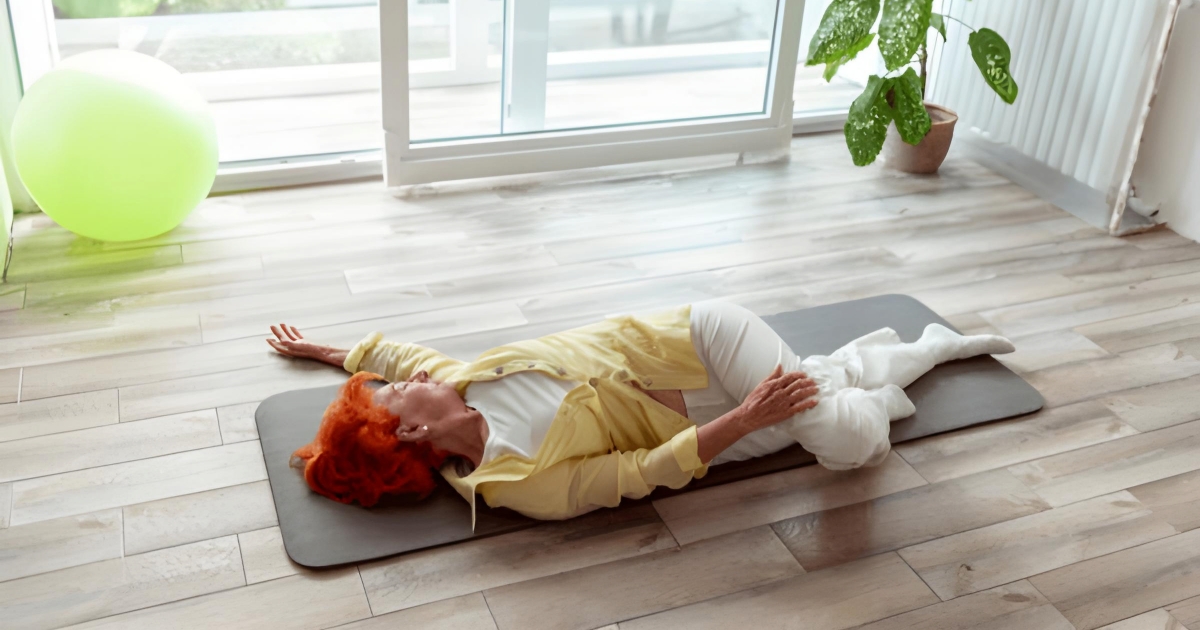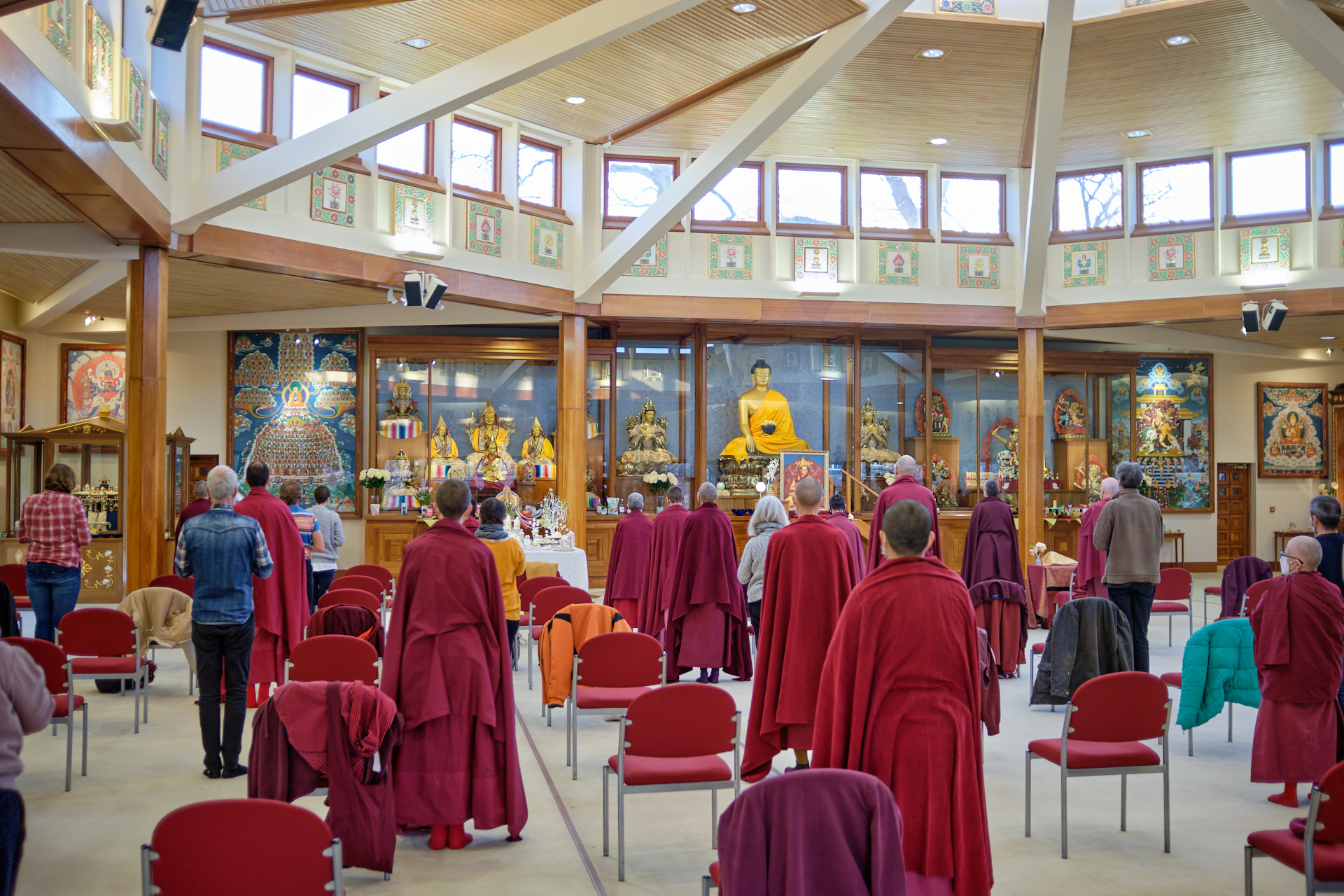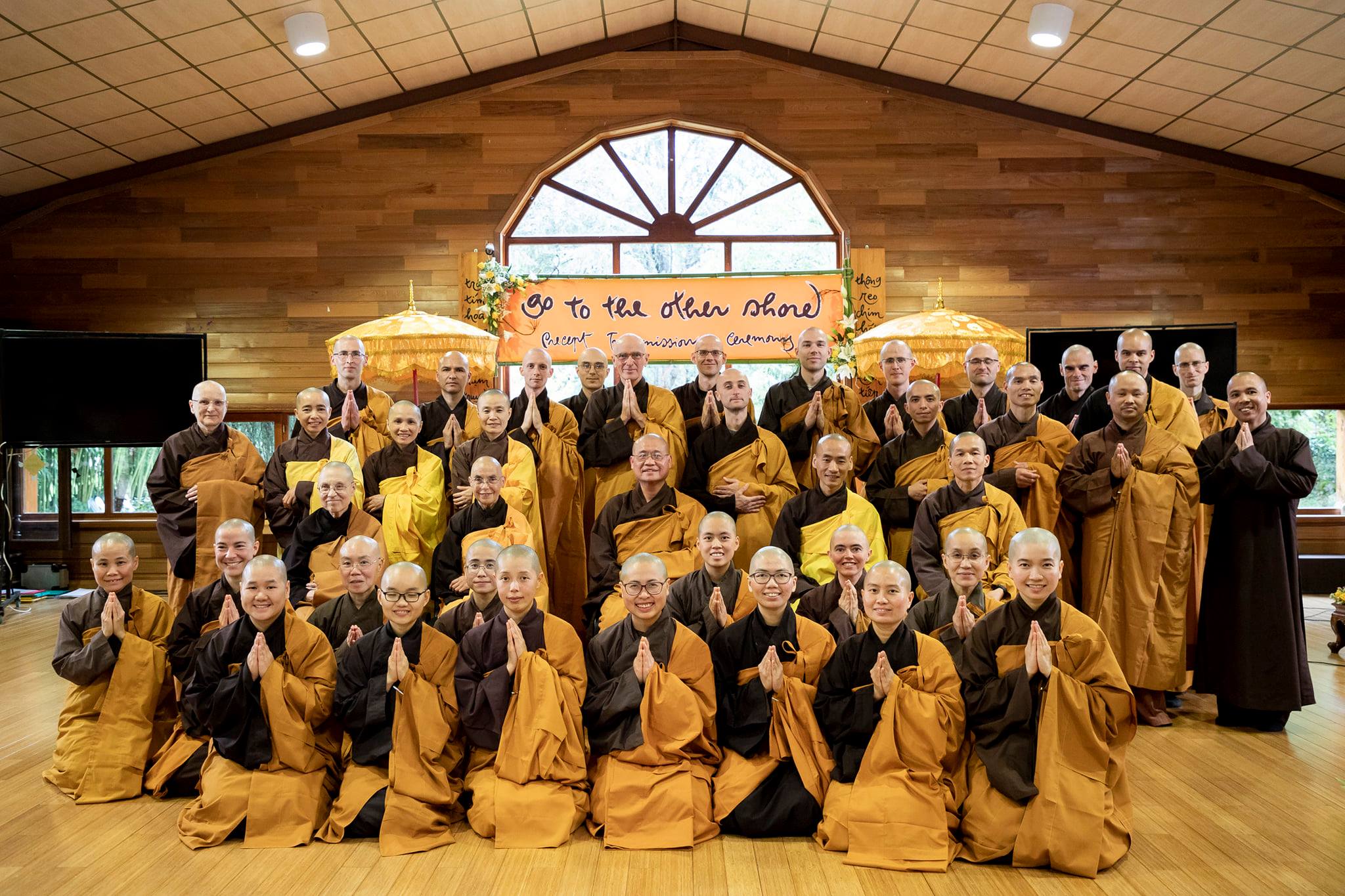Supine Twist: My Expert Tips for Releasing Tension with Supta Matsyendrasana
The post Supine Twist: My Expert Tips for Releasing Tension with Supta Matsyendrasana appeared first on The Yoga Nomads.

Key Takeaway
Supta Matsyendrasana, or the Supine Twist, is a popular reclined yoga pose used to relieve tension, induce relaxation, improve digestion, and increase flexibility in the spine. Learn the proper way to practice this rejuvenating pose safely with this in-depth guide.
Do you wake up with a stiff back in the mornings? Do your shoulders feel tight after a long day of work? Do you experience lower back pain?
Based on feedback from my students, these are familiar issues for most people—even for me, as a yoga teacher! While there’s no cure-all for getting rid of these aches and pains, I recommend one yoga pose: the classic supine twist.
In my yoga journey, the reclining spinal twist, or Supta Matsyendrasana, has become a cornerstone for managing back pain and releasing tension. There are days I might not complete a full yoga practice, but I never skip this pose.
I love how this asana addresses the knots of daily stress and invites a deeper connection with my own body. It encourages mindfulness and breath awareness, resulting in much-desired physical and mental relaxation.
Doesn’t that sound appealing? Keep reading as we delve into this rejuvenating yoga pose. I’ll walk you through detailed practice instructions with expert tips so you, too, can experience all the wonderful benefits of Supta Matsyendrasana.
Step-by-Step Guide to Supta Matsyendrasana
Initial Position
Begin in Savasana, lying on the floor with your legs extended. Rest your arms at your sides, palms facing up. This is your starting point for Supta Matsyendrasana, with your body relaxed and your spine in a neutral position.
Entering the Pose
Bend your right knee and bring it towards your chest. Squeeze it close to your body as you inhale. With your exhale, bring your right knee across your body over to your left side. Rest your left hand gently on the outside of your right thigh. Reach your right arm open, palm facing up. Feel the front of your right shoulder and your chest open. If it feels okay for your neck, turn your head to gaze at your right hand. Hold this twisted position for several breaths, allowing your inhales and exhales to flow naturally.Exiting the Pose
When you’re ready to release, move gently and take your time. Rotate onto your back, bringing your right knee to your center, then release your leg down.
Pause for a few breaths in Savasana before practicing Supta Matsyendrasana on your left side.
Common Mistakes and How to Avoid Them
In addition to following the directions above, keep these common mistakes in mind. This expert advice comes from my yoga practice and, as a yoga teacher, listening to feedback from my students.
Forcing the position: Avoid forcing your knees to the floor as you rotate. This can cause injury to your spine. Instead, allow your knees to fall as far as they can without strain naturally. Over time, with consistent practice, you may notice increased flexibility. Holding your breath: Since your torso is twisted, your breath might feel a bit constricted when holding this stretch. It’s important to keep breathing through each stage of the twisting motion to help your muscles relax and release tension. Rushing the movement: Moving too quickly into this twisted position can result in injury. It’s better to move slowly to ensure your muscles are relaxed and you aren’t forcing the twisting motion. Exiting too soon: Your muscles will need time to release fully to get the most out of this pose. The longer you hold the pose, letting your breath flow, the more you’ll feel your body soften into the stretch.Contraindications and Safety Tips
While Supta Matsyendrasana can be incredibly soothing and rejuvenating for some yogis, there are exceptional cases in which it’s best to use extra caution or skip this pose entirely.
Health Concerns
Spinal injury: if you have a slipped or bulging disc, avoid this pose, as the twisting motion can worsen your condition. Pregnancy: During the first trimester, it’s best to skip this pose as it may cause uterine contractions; this asana is a no-go later in pregnancy as well, as it places too much pressure on the abdomen. Chronic back pain: While gentle twists may help alleviate back pain in some cases, avoid twisting poses until you consult with your doctor. Neck issues: If you have a stiff neck, use caution and do not turn your head in this pose to avoid straining. If you’ve had a recent injury or surgery, getting a doctor’s clearance is crucial before attempting this asana.Core Engagement
Since this is often a rejuvenating or restorative asana, you might think the whole body is completely relaxed in Supta Matsyendrasana. However, you should engage your core gently to support your back.
I find that this subtle engagement of my core helps maintain stability in my lower back so I can focus on releasing tension in my shoulder and glutes.
Listen to Your Body
Always listen to your body while practicing Supta Matsyendrasana. Overstretching can lead to discomfort or even injury. I always remind my students that pushing too hard defeats the purpose of yoga, which is about cultivating balance and harmony.
Supta Matsyendrasana Modifications
Everyone’s body is unique, which is why it’s so important to try different variations of this asana to see which version feels best to you.
Supportive Props
Make this asana a restorative experience by using props to maximize comfort and relaxation.
Place a bolster or block next to you. As you bring your leg across your body, allow your bent knee to rest on your cushion of choice. This will lessen the intensity of the pose. Folded blankets provide extra cushion under the hips or head, especially if you plan to hold the pose for several minutes.Make sure you’re prepared with the right equipment. With a block (or two!) from Lululemon and a Manduka bolster, you’ll be ready to modify any yoga pose!

lululemon’s Lift and Lengthen Yoga Block
Variation with Knees Together

Different leg positions can change how this asana feels. Try this variation:
Bend both knees toward your chest, then lower them down to your left side, with your right leg stacked on top of your left. Keep both arms outstretched. Engage your core muscles to bring your knees through your center, then lower them to the right, rotating the other way.Adjustments for Mobility and Expectations
Supta Matsyendrasana requires flexibility in the gluteal muscles, spine, and shoulders. Since every individual’s body is different, everyone’s experience in this asana will be different.
For example, someone with tight glutes or lower back muscles will experience difficulty pressing their knee to the floor. Someone with much upper body tension might notice their shoulder rise from the mat as they bring their knee across.
The point is: don’t expect your reclined twist to look the same as anyone else’s. Focus on your own experience and honor your body by listening to its unique needs.
Supine Spinal Twist Benefits
Supta Matsyendrasana brings a host of benefits to improve your overall well-being.
Spinal health: Regularly practicing twisting asanas improves spinal flexibility and can improve posture gradually. Pain relief: Chronic back pain is all too common these days, especially for people who work at a desk. Supta Matsyendrasana can help relieve mild aches and pains and reduce stiffness in the lower back. Tension release: In addition to relaxing your back, this asana stretches your glutes, back, shoulders, and chest, which can become tense after long periods of sitting. Digestion aid: Spinal twists apply gentle pressure to the abdomen, then provide a rush of blood circulation to the digestive organs when you release the pose. This stimulation can help encourage peristalsis, the muscle contractions that move food through your digestive tract.Integrating Supine Twist into Your Yoga Routine
In my experience teaching yoga, I’ve found Supta Matsyendrasana to be a highly versatile pose. Here are some suggestions on how and when to use this asana in various types of sequences:
Supta Matsyendrasana Uses
Warm up the spine before deeper backbends or forward folds. Transition into relaxation following a physically demanding sequence. As a counterpose to release the back muscles after postures like Bridge or Plow. Hold for several minutes in a Yin Yoga practice to release your soft tissues and calm your mind.Sequencing Options
Deciding when to place the supine twist in your yoga session is up to your preference. I regularly use it in my classes during warm-up periods for mild spinal mobilization.
It also works well near the end of your session as part of cool-down routines; it’s an excellent posture for relaxation and integration before Savasana.
Personal Focus
Yoga is a personal practice that varies from person to person. As you incorporate the supine twist into your yoga routine, pay attention to how it feels in your body and practice according to your needs.
For example, I typically focus on opening my shoulder and chest in this pose, as that’s where I hold on to more tension. You might work on spinal flexibility, while another person may focus on releasing the gluteal muscles. The key here, as always, is to listen to your body!
So, are you ready to flow? Yogadownload.com offers many free online yoga classes; you can search for twisting-focused flows. Browse the many class options here.
Conclusion
Supta Matsyendrasana offers an opportunity to tune in to your experience, noticing what parts of you are tight and using your breath intentionally to release tense muscles.
The bonus is that as you breathe and release physical tension, you’ll also feel mental stress melt away.
Now that you’re equipped with essential practice tips and step-by-step instructions, I encourage you to add Supta Matsyendrasana to your next yoga practice. Turn it into a mindfulness practice and become curious about how you can use this versatile asana.
Roll out your mat and get ready to twist your way to better spinal flexibility and a more balanced body and mind!

Frequently Asked Questions
What is a supine twist in yoga?
Also known as Supta Matsyendrasana, the supine twist is a reclined yoga pose that involves rotating the spine gently while lying on the back.
What are the common mistakes in this asana?
Common mistakes are forcing the knee to the floor or rushing through the movement. Try to move gently and slowly in twisting postures to avoid injury.
What props can I use in Supta Matsyendrasana?
Folded blankets, bolsters, or a block can support various body parts during Supta Matsyendrasana for better alignment and comfort. You can
What are the benefits of practicing Supta Matsyendrasana?
Practicing twists like this can improve spinal mobility, aid digestion, relieve stress, and release muscle tension.
How often should I integrate this asana into my routine?
You can include Supta Matsyendrasana in your yoga practice as often as you’d like. Personally, I practice this posture nearly every day to relieve stiffness.
Thanks for your feedback!

 Kass
Kass 































